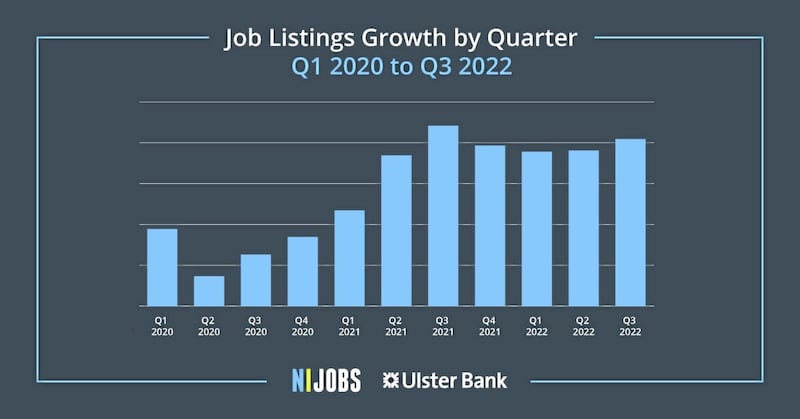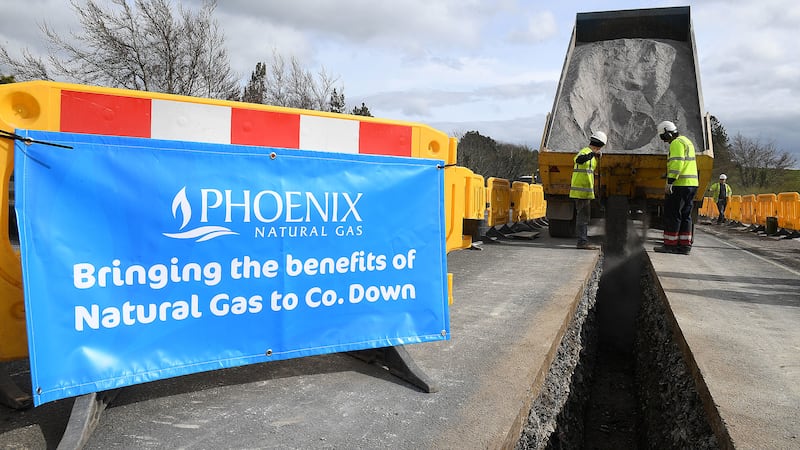DEMAND for staff in the north is still high despite a slight rise in the official unemployment rate, a new report has found.
The latest labour market analysis by NI Jobs found the number of employers actively hiring during the third quarter (Q3) of 2022 remained elevated and was 90 per cent higher than the corresponding period pre-Covid (Q3 2019).
Job vacancies listed on the recruitment platform rose by 6 per cent between the second and third quarters of this year, while six categories posted their highest number of job openings to date.
The recruiter lists around 1,200 businesses on its platform.
Official analysis by the Northern Ireland Statistics and Research Agency (Nisra) signalled last week that employment may have peaked here.
October’s labour market report showed the number of employees on company payrolls fell by 0.1 per cent, representing the first monthly decline in over a year.
Nisra estimated the north’s unemployment rate stood at 3 per cent for the three months to August, an increase of 0.4 percentage points over the quarter.
Ulster Bank’s latest PMI has also suggested the north may have entered a technical recession in the third quarter.
NI Jobs said the total number jobs on its site was 7 per cent down on the same period last year. But the recruiter said Q3 2021 involved record highs following the lifting of lockdown restrictions.
Its report said while employment levels appear to have peaked, some sectors are still suffering from chronic labour shortages.
The north’s hospitality sector saw a 24 per cent quarter-on-quarter rise in vacancies in the third quarter
Sam McIlveen, general manager of NI Jobs said: “Despite the recent increase in unemployment, the number of people in work remains high, which means the number of candidates available to recruiters is small, with employers targeting the same talent pool.
“All of this makes it a challenging hiring environment for employers who are also struggling to meet demand alongside soaring energy and wage bills.”

The sectors posting record vacancies during Q3 include: Construction, architecture & property; publishing, media & creative arts; HR; science, agriculture, pharmaceutical & food; motoring; and tourism, travel & airlines.
Ulster Bank’s chief economist, Richard Ramsey, said: “Employment may have peaked, but the number of job vacancies continues to climb. This highlights that there remains a significant amount of churn in the labour market.”
Meanwhile, the latest labour force survey in Northern Ireland implied the cost-of-living crisis is having an impact, with an increasing number of over 50s returning to the workplace.
“Those who can work may re-enter the workforce as household budgets become squeezed. In fact, we are already seeing it happen,” said Mr Ramsey.
He said with wages failing to match the rising rate of inflation, and both energy prices and mortgage interest rates surging, “a cost of borrowing crisis is now a new variant of the cost-of-living crisis”.
“For many, chasing a promotion, changing jobs, or seeking a different career have become a necessary response for cost-of-living reasons.
“In the war for talent, employers are having to up their game to attract and retain.”








